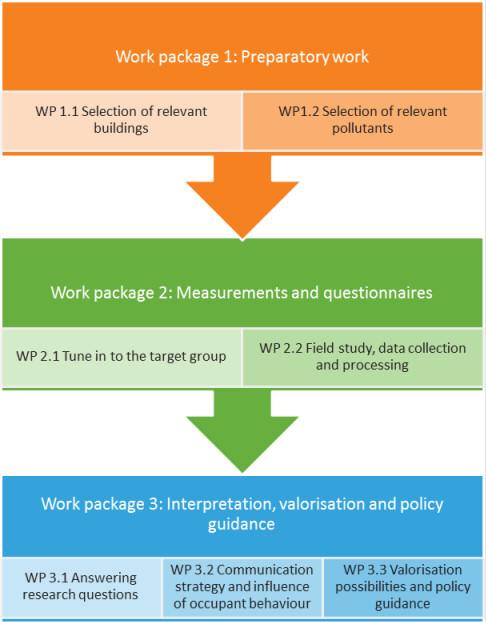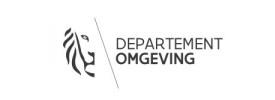Work package 1
In work package 1 relevant group renovation projects are selected and pollutants and building characteristics to be assessed are defined. Two questionnaires are formulated to inventory information about occupant behavior and indoor living: a questionnaire on the use of the building (residents and residents behaviour) as well as a short survey on occupant activities during the measurements.
WP1.1 Selection of relevant group renovation projects
Detailed information about the energy-saving renovations that will be, or are being organized is collected by means of a brief survey (outlined in collaboration with VMSW, LNE and a number of social housing association). This survey includes:
- The address of the group renovation project, including the location of the buildings;
- size of the group renovation project (number of dwellings renovated or to be renovated);
- scheduled duration of the construction/renovation works and current status of the (planned) work
- building type (apartments, semi-detached or terraced houses)
- intended number of occupants per house
- a listing of the planned renovations and the level of energy-saving measures that is aimed for (passive renovations, BEN-renovations, low-energy renovations, ventilation system type, ...)
After evaluating the collected information, a screening of the renovation plans and a site visit (if needed), at least 4 relevant group renovations are selected.
WP1.2 Selection of relevant parameters
The Indoor Air Quality assessment programme focuses on the characterization of chemical, physical and biological parameters of the indoor environment and the measurement of building envelope characteristics (such as surface temperature and energy consumption) of social dwellings before and after renovation.
For a better understanding of the impact of occupant behavior on the indoor environment, the building residents and their indoor activities which may impact on the indoor air, will be inventoried by means of an online survey.
Within each of the four selected group renovation projects, four representative dwellings are recruited for the characterization of the indoor environment before and after renovation.
Work package 2
In work package 2, air measurements inside these four dwellings of the same group renovation and at one representative outdoor location, are carried out simultaneously. To avoid the impact of new building material emissions, a waiting period of 6 months is respected before the indoor environment will be characterized after renovation.
The air quality measurements and the characterisation of the building envelope of each dwelling will be performed during a one-week measurement period. Thermography will be possibly carried out at a different time, because of its dependence of the outdoor temperatures.
Work package 3
In work package 3 the results will be compared to existing guidelines and standards for ventilation, indoor environment and building envelope, such as ‘Het Vlaams Binnenmilieubesluit’, WHO guidelines for the indoor environment. Results will also be evaluated to data from previous regional studies on the quality of the indoor environment in traditional, low-energy and renovated dwellings and schools such as Flies, BiBa, Clean Air Low Energy and Renovair. The measurement data are also compared to literature data.
These outcomes, together with feedback from occupants, and information obtained from stakeholder and focus group discussions, will lead to the identification of success factors and bottlenecks, related to social housing and occupant behaviour.
Guidelines for healthy living in energy-efficient houses will be implemented in a communication tool, especially developed and designed for the target group, in order to sensibilise and inform occupants of social houses.
Measures for healthy building design choices for large-scale renovation projects will be proposed. Also points of interests for sensibilisation, education and communication are part of this research project. In addition, concrete policy recommendations for environmental policy and other policy entities (product policy, health policy, housing policy) are provided. Actual behaviour tips for the population, suggestions for practical solutions and advice and guidelines concerning problems in renovations are given.


